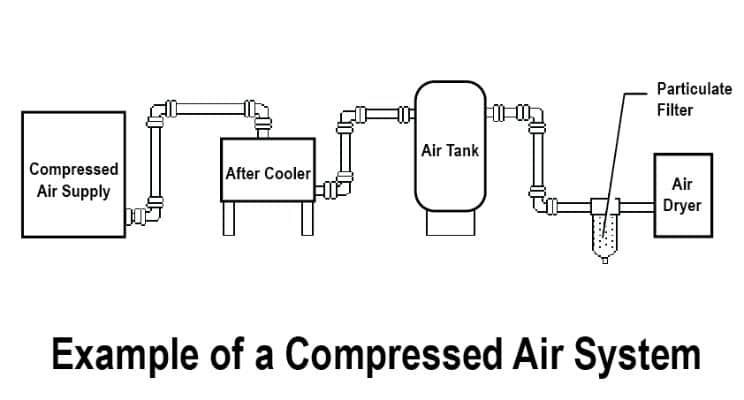Drying Supply Side Air With Heat of Compression Dryers
The supply side of a compressed air system has many critical parts that factor in to how well the system operates and how easily it can be maintained. Dryers for the compressed air play a key role within the supply side are available in many form factors and fitments. Today we will discuss heat of compression-type dryers.

Heat of compression-type dryers are a regenerative desiccant dryer that take the heat from the act of compression to regenerate the desiccant. By using this cycle they are grouped as a heat reactivated dryer rather than membrane technology, deliquescent type, or refrigerant type dryers. They are also manufactured into two separate types.
The single vessel-type heat of compression-type dryer offers a no cycling action in order to provide continuous drying of throughput air. The drying process is performed within a single pressure vessel with a rotating desiccant drum. The vessel is divided into two air streams, one is a portion of air taken straight off the hot air exhaust from the air compressor which is used to provide the heat to dry the desiccant. The second air stream is the remainder of the air compressor output after it has been processed through the after-cooler. This same air stream passes through the drying section within the rotating desiccant drum where the air is then dried. The hot air stream that was used for regeneration passes through a cooler just before it gets reintroduced to the main air stream all before entering the desiccant bed. The air exits from the desiccant bed and is passed on to the next point in the supply side before distribution to the demand side of the system.
The twin tower heat of compression-type dryer operates on the same theory and has a slightly different process. This system divides the air process into two separate towers. There is a saturated tower (vessel) that holds all of the desiccant. This desiccant is regenerated by all of the hot air leaving the compressor discharge. The total flow of compressed air then flows through an after-cooler before entering the second tower (vessel) which dries the air and then passes the air flow to the next stage within the supply side to then be distributed to the demand side of the system.
The heat of compression-type dryers do require a large amount of heat and escalated temperatures in order to successfully perform the regeneration of the desiccant. Due to this they are mainly observed being used on systems which are based on a lubricant-free rotary screw compressor or a centrifugal compressor.
No matter the type of dryer your system has in place, EXAIR still recommends to place a redundant point of use filter on the demand side of the system. This helps to reduce contamination from piping, collection during dryer down time, and acts as a fail safe to protect your process. If you would like to discuss supply side or demand side factors of your compressed air system please contact us.
Brian Farno
Application Engineer
BrianFarno@EXAIR.com
@EXAIR_BF
Heat of compression image: Compressed Air Challenge: Drive down your energy costs with heat of compression recovery: https://www.plantservices.com/articles/2013/03-heat-of-compression-recovery/

